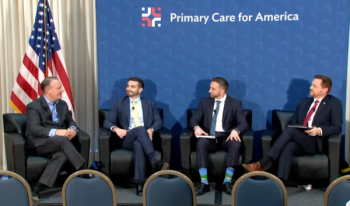
A physician's guide to restrictive covenants
The importance of well-drafted provisions.
As a condition of employment in various industries, including healthcare, an employee is often required to enter into an employment agreement containing certain restrictive covenants. The most common restrictive covenants are noncompete and non-solicitation provisions that restrict the employee’s conduct during and after employment. However, the continuing challenges of restrictive covenants are causing employers to question the covenants’ validity and enforceability. Working with a healthcare attorney to develop an enforceable agreement requires exploring the employer’s legitimate protectable interest and the damages that would result from violation of restrictive covenants. The more an employer can demonstrate the need for the restriction, the greater the likelihood of enforcement.
Well-drafted Restrictive Covenants can Protect Employers
A noncompete by its nature is intended to protect an employer from an employee who competes with his/her employer during the course of employment and for a specific period of time thereafter. In addition to the duration of the restriction, there is also a specified restricted area in which the employee is prohibited from working. The restricted area may be defined by a geographic radius, i.e. within a certain number of miles of the employer’s office, or a larger area in more rural areas. For physicians, the noncompete may be a general restriction from practicing medicine, or a more specific limit relating to the specialty of the practice. For example, a practice employing a neurologist who specializes is epileptology may be better off limiting the restriction to practicing epileptology as opposed to neurology generally. Consideration of the duration and scope are imperative to enforceability. In fact, employers should be mindful of the reasonableness of the restriction when presenting it to an employee. The more reasonable the restrictions, the more likely a Court will enforce the covenant. In fact, employers should be wary of drafting restrictive covenants that are overbroad.
Contrary to the concept of throwing restrictions against the wall to see what sticks, Courts may in fact determine that the restrictive covenant is too broad for enforcement and may choose not to modify it. While Courts have the ability to conform a restrictive covenant to make it more reasonable in scope and/or duration, called “blue penciling”, they may be more reluctant to do so where the employer drafted an overbroad restriction.
Courts throughout the country generally require an employer to prove the same elements in order to establish the enforceability of these restrictive covenants. Since employers cannot enforce a restrictive covenant for the purpose of avoiding competition, it is imperative that the restrictive covenants are drafted in a manner that avoids such a challenge and are reasonable in scope and duration. To be enforceable, restrictive covenants must (1) be necessary to protect the employer’s legitimate interest, (2) not cause an undue hardship on the employee; and (3) not be contrary to public interest. Examples of legitimate protectable interests include ongoing relationships with patients, referral sources, and employees, as well as protecting confidential information and trade secrets that the employee learns and is exposed to during the tenure of employment.
States Are Limiting Restrictive Covenants
Certain states, including California, Montana, North Dakota and Oklahoma have already limited the enforceability of noncompete agreements, with others starting to follow suit. California considers any contract by which an employee is “restrained from engaging in a lawful profession, trade or business of any kind” void. California Business and Profession Code §16600. Montana also prohibits the use of noncompete agreements. Colorado deems noncompete agreements void, however, an employer may be entitled to damages from an employee who terminates his/her employment agreement prior to the end of the term and then competes. However, in that scenario, the ability to prove damages from said breach becomes essential to the employer’s success. Colorado Revised Statute §8-2-113(3).
Currently New Jersey still enforces noncompete agreements so long as they are reasonable in scope and duration and serve a legitimate business purpose of the employer. Community Hospital Group, Inc. v. More, 365 N.J. Super. 84 (2003). However, a pending bill, if passed, may result in limits on the category of employees who may be subject to restrictive covenants, as well as the duration and scope of said restrictions. Assembly Bill No. 1650. Likewise, New York Courts in the First and Second Departments will also enforce reasonable noncompete agreements unless the employee is terminated without cause. Kolchins v. Evolution Mkts., Inc. 182 A.D.3d 408, 409 (1st Dept. 2020); Borne Chemical Co. v. Dictrow, 85 A.D.2d 646, 649 (2d Dept. 1981).
Non-solicitation Provisions
Similar to the noncompete, employees are also often contractually restricted in their post-employment activities as they relate to patients, employees and referral sources. A nonsolicitation will place limits on an employee’s ability to steer patients, employees and referral sources away from the employer and to the employee’s new practice. Establishing a violation of a nonsolicitation is often more challenging than demonstrating a violation of a noncompete. But both require a practice to consider the interests to which they seek to protect, and the best way to narrowly tailor the restrictive covenants to ensure they will be enforced, if challenged. Since patients have the right to choose their medical provider, Courts will be reluctant to prevent an employee from treating patients who decide to continue their care with the departed employee. However, if an employee violates a nonsolicitation, a Court could order disgorgement of revenue derived from the solicited patient. Yet the language used in a nonsolicitation is imperative since proving actual solicitation is often a significant hurdle to overcome. Solicitation requires an affirmative action by the employee, as opposed to a patient locating the employee and following the employee to his/her new practice. Nevertheless, nonsolicitation provisions generally go hand in hand with non competes and in the right circumstance can serve as a valuable shield against damages from a departing employee.
Challenges to, and Enforcement of, Restrictive Covenants
When it comes to enforcement of restrictive covenants, the most common application is for injunctive relief, wherein the employer seeks to have a Court enjoin (prevent) the employee from practicing in the restricted area and/or soliciting patients, employees and/or referral sources. Injunctions are generally filed by way of an order to show cause (asking for emergent immediate relief). Generally, courts will enter an injunction in the rare circumstance where the employer can show that absent the injunction the employer will suffer immediate and irreparable harm. This is a high standard and dependent on the specific factual circumstances of each case. Since the party seeking the injunction is required to show imminent harm, employers who seek to enforce a restrictive covenant must act quickly and be prepared to show the irreparable harm the employer will suffer if the employee is permitted to violate the restrictive covenant. “Irreparable harm” requires the employer to demonstrate that its damages are not compensable by money and that injunctive relief is the only way to prevent damages. Since it can take months for an employer to actually see the damages that stem from the employee’s violation, meeting the “irreparable harm” prong may prove difficult to the employer.
Liquidate Damage “Buyout” as an Alternative to Injunctive Relief
Meeting the “irreparable harm” element can sometimes prevent an employer from obtaining the necessary relief it seeks and thus employers can take an alternative course. Since these injunction applications are highly contested and fact specific, employers should consider including a liquidated damage provision in the agreement. Sometimes referred to as a “buy out”, liquidated damage provisions are contractual agreements that the employer and employee enter into at the time of employment and set forth the amount that the employee would have to pay the employer for breaching the restrictions. Liquidated damage provisions can be an alternate solution to the expense and uncertainty of litigation attempting to enforce a restraint on the employee’s conduct, and may be enforceable so long as there is a reasonable correlation between the liquidated amount and the damages sustained. The amount of the buyout can be tied to the employee’s prior compensation and/or collections and allows the employee to buy out of the restrictive covenant and avoid the uncertainty of litigation relating to a violation of the restrictions. In some instances, future employers may be willing to fund the buyout in order to secure the employee without the potential for litigation against the employee and potentially the new employer for interfering with the contractual relationship.
In light of what may be a growing trend in limiting restrictive covenants and the need for well-drafted provisions, employers should review their existing agreements, consider their legitimate protectable interests and consider updating their agreements to provide more protection and enforceable agreements.
Michelle L. Greenberg, Esq. is a Partner at Frier Levitt, LLC where she specializes in healthcare and employment litigation. Michelle has argued for and against the enforcement of restrictive covenants in Courts in New York and New Jersey and often guides clients on the drafting and enforceability of these covenants. For further questions she can be reached at
Newsletter
Stay informed and empowered with Medical Economics enewsletter, delivering expert insights, financial strategies, practice management tips and technology trends — tailored for today’s physicians.


















